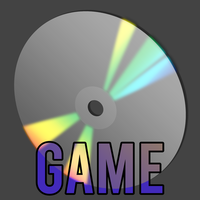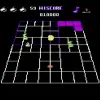More like this...
THEATRE_EUROPE Commodore 64 game
Theatre Europe" is a British video game released in 1985. It's a turn-based strategy game with optional shoot'em up screens. It was ported to many systems of that era and received positive reviews. The publisher, Personal Software Services, specialized in strategy games and developed several titles with similar gameplay and graphics.
The game attempts to simulate a world war between NATO and the Warsaw Pact during the 1980s, featuring conventional battles as well as NBC (nuclear, biological, chemical) weapons. The game is single-player; the human player can choose one of the two sides, and the computer will command the opposing side. For the Warsaw Pact, the objective is to advance with several divisions beyond the Rhine within 29 in-game days, while NATO's goal is to prevent this. If the player initiates a total nuclear attack, the computer opponent will always retaliate, leading to mutual annihilation. Imminent conventional defeat or repeated use of NBC weapons by either side may prompt the computer to launch a total nuclear attack. If the player's reflex system is on, they will automatically retaliate, resulting in mutual annihilation. If the player's reflex system is off, retaliation to such an attack is not possible, and the computer will win.
During development, PSS inquired about the actual military strength in Europe and contacted Soviet and British institutions for information. The developers eventually found that communist forces were vastly superior and wondered if it would be possible to create a playable game. Balance was achieved by downsizing Russian forces and providing the computer with basic instructions to guide its moves. Playing on the Warsaw Pact side is relatively easy, while winning as NATO is somewhat challenging, mainly because the computer doesn't play as well as a human player.
Upon release, the game created controversy in England and Finland, where the sale of the game was seen as a provocation to the Soviet Union and criticized in parliament. The game was relatively popular in Eastern Europe in the 1980s and has been translated into Spanish and Italian.
The game was notable for requiring players to input a password to access certain options. The password was not provided in-game or in the manual; instead, players were instructed to call a specific phone number in the United Kingdom, which played a recorded message with the password, "midnight sun," for accessing strategic nuclear options.
The opening and ending screens of the game feature an electronic version of "Give Peace a Chance" by John Lennon.
Starting Options
Before starting the game, players must choose from several options:
- Choosing a side - NATO is represented by the blue army on the left, and the Warsaw Pact is represented by the red army on the right. The human player always plays first.
- Difficulty level - 1 is the easiest, while 3 is the most difficult. Higher difficulties make enemy units tougher and increase the computer player's likelihood of using NBC weapons. Repeated use of NBC weapons can lead to a nuclear holocaust and game over.
- Action screens - Action screens are mini-games where the player attempts to shoot and destroy enemy vehicles. Player performance affects the outcomes of battles.
- Reselect - The starting menu allows players to reselect game options, but choices made during gameplay are often irreversible. Most emulators do not support saving or loading mid-game, attempting to do so may cause the program to crash.
Gameplay
The main gameplay occurs on the following screen:
The game is played in turns, with a maximum of 15 turns. The human player always starts the game, followed by the computer's turn. After both players finish their turns, the game advances by two in-game days. Each turn is divided into phases:
-
Troop Movements - Every unit, equivalent to real-life corps or divisions, can move to any adjacent free land square. Moving to a mountain square prevents the unit from moving again during the next turn. The Warsaw Pact has an amphibious unit that can move through water but can only move through land after landing. If it sails beyond the Danish Strait, NATO navy will automatically sink it once it reaches two squares north of Copenhagen. The Warsaw Pact also has an airborne unit that can parachute onto a portion of the map. Its first move counts as a flight, after which it can only move on land and can only be resupplied with air cover. Neutral units never move.
-
Chemical Release Order - Each side can authorize its units to use tactical chemical weapons, which increase damage caused in battle. This order can be given once per game and is irreversible. If the player authorizes it first, the computer will likely do the same during its turn or the next. If the computer authorizes it first, the player should follow suit. The use of chemical weapons raises the Defcon level, increasing the odds of the computer launching a total nuclear attack.
-
Bombing - If the game is set on difficulty levels 2 or 3, and the player has allocated enough resources to the assault-breaker ability, they can bomb one enemy unit before attacking.
-
Attack - Every unit can attack an adjacent enemy unit. The amphibious unit can attack only when on land. Defending units receive a combat bonus, and units on mountain squares receive a larger bonus. Battles cause damage to both the attacker(s) and the defender, with damage calculated based on the balance of power between the attacker(s) and defender, multiplied by a random factor, and affected by the result of the action screen.
-
Action Screen - During a battle, the player can choose to play the action mini-game, which involves shooting at different classes of vehicles. The player should avoid shooting lower vehicles, which are allies. Destroying them doesn't penalize the player but prevents them from scoring kills among enemy vehicles.
-
Rebuild - Each unit has three values: armor (arm), counter air (air), and air superiority (sup). Armor represents the unit's basic strength, while the other two are secondary. If armor falls to zero, the unit is destroyed, unless it's due to aerial bombing only, in which case the unit survives in a precarious state. Counter air allows units to damage other units' air superiority during combat, and air superiority allows a unit to resist targeted bombing or strategic interdiction. During the rebuild phase, a number of reinforcements are available each turn to distribute among different units. If not assigned, these reinforcements are lost.
-
Air Phase - During the air phase, reinforcements are available to allocate to different strategic missions: air superiority, counter air, interdiction, reconnaissance, assault-breaker, deep-strike, and iron-snake. Air superiority is crucial for defense against enemy air missions. Counter air allows for attacking enemy air forces. Interdiction targets enemy reinforcements in transit to the front, denying land reinforcements to the enemy. Reconnaissance reveals the current strength of enemy units on the main map. Assault-breaker allows bombing a specific enemy unit before the attack phase, available if its value is higher than 10. Deep-strike and iron-snake are less effective missions due to high requirements and limited impact.
-
Special Mission Phase - This phase manages the strategic nuclear and chemical arsenal. The interface is poorly designed, with options accessible in sub-menus but no way to return once inside them. Only one choice is possible per turn, and commands are not well explained. The options include:
- Strategic Nuclear Launch: Leads to a sub-menu requiring a password ("midnight sun") and offers options for total nuclear war or restricted nuclear war.
- Strategic Chemical Launch: This option is unavailable if the player already authorized tactical chemical use.
- Defcon Raise: Increases the Defcon level, increasing the odds of a total nuclear attack from the enemy.
- Strategic Interdiction: Attempts to target enemy supply depots. The computer will attempt this as well, making it nearly impossible to bomb enemy depots effectively.
- Scud Attack: The Scud missile launcher requires full fuel. The launch is not guaranteed to hit its target but can disrupt enemy troop movements. The player should launch it in the later turns to avoid the computer's anti-aircraft fire.
-
Unit Priority Phase - This phase allows players to set the order in which units will rebuild after suffering damage. This becomes relevant when multiple units need reinforcements, and the player has insufficient resources to fully repair them all.
-
End Turn - This advances the game by two in-game days, and the computer's turn begins.
Computer AI and Balance
The computer AI in "Theatre Europe" is relatively simple compared to modern strategy games. The AI opponent follows basic instructions and lacks the adaptability and decision-making capabilities of human players. This often results in the Warsaw Pact AI being easier to defeat than the NATO side, as it doesn't utilize its forces as effectively.
To balance the game, the developers made several adjustments, such as downsizing the strength of the Warsaw Pact forces and giving the computer player basic instructions to guide its moves. This balance was necessary to make the game more enjoyable for human players and avoid a situation where the Warsaw Pact would be nearly unbeatable. Winning as NATO can still be challenging due to the game's mechanics and the potential for the computer to launch a total nuclear attack.
Overall, "Theatre Europe" is a turn-based strategy game with a unique historical and political context, and it offers an interesting gaming experience for those interested in Cold War-era conflict simulations. However, its gameplay mechanics and AI limitations may feel dated to modern players accustomed to more complex and sophisticated strategy games.
Game category: Commodore 64 games
Recently played



Comments